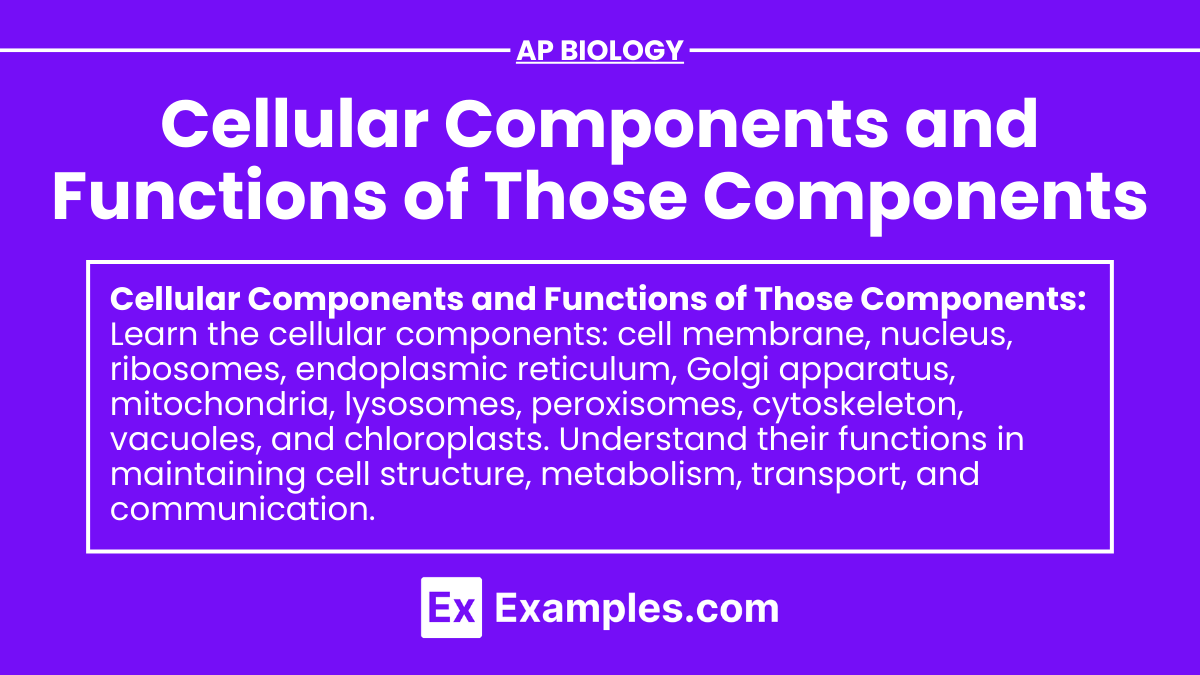In AP Biology, mastering the cell and its components is essential. Each cellular component, such as the cell membrane, plays a critical role in maintaining the cell's integrity and functionality. Understanding the chemical properties of these components, like the phospholipid bilayer of the cell membrane, helps explain how substances move in and out, impacting overall cell function. This foundational knowledge is key to studying more complex biological processes.
Learning Objectives
Students will understand the structure and functions of key cellular components including the cell membrane, nucleus, ribosomes, and mitochondria. They will learn how these components interact and contribute to cellular processes. Emphasis will be on the chemical properties that enable their functions, such as the phospholipid bilayer of the cell membrane. Mastery of these objectives will provide a solid foundation for exploring more complex topics in AP Biology.
Cell Membrane (Plasma Membrane)
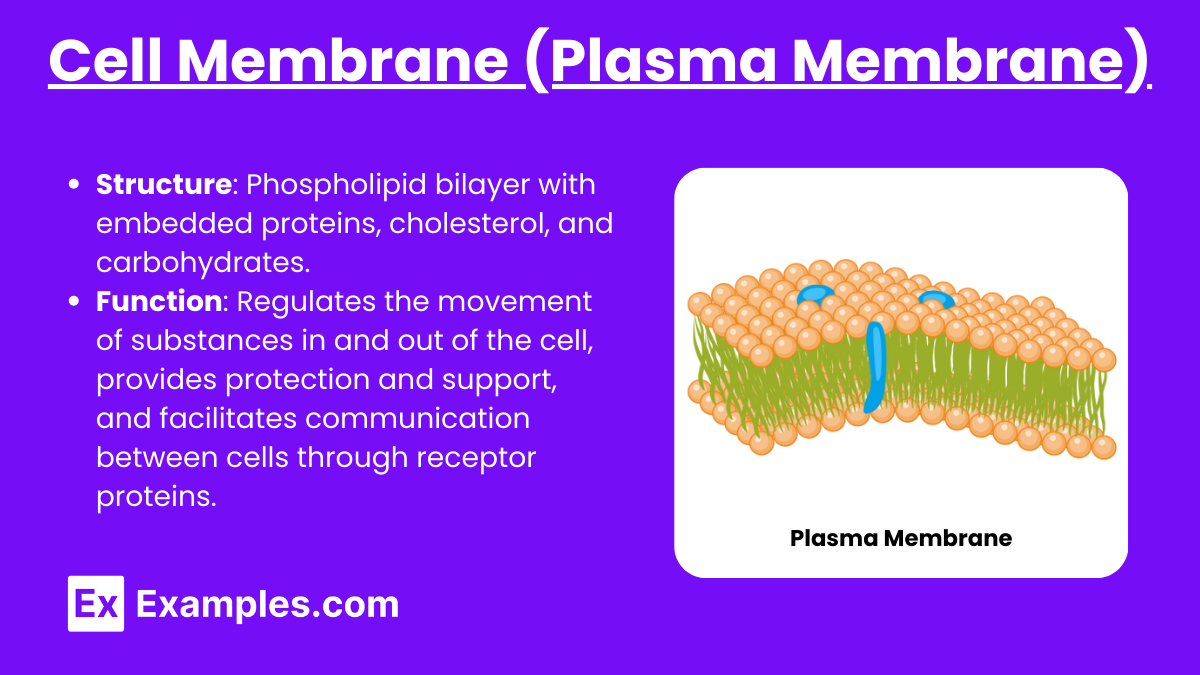
Structure: Phospholipid bilayer with embedded proteins, cholesterol, and carbohydrates.
Function: Regulates the movement of substances in and out of the cell, provides protection and support, and facilitates communication between cells through receptor proteins.
Cytoplasm
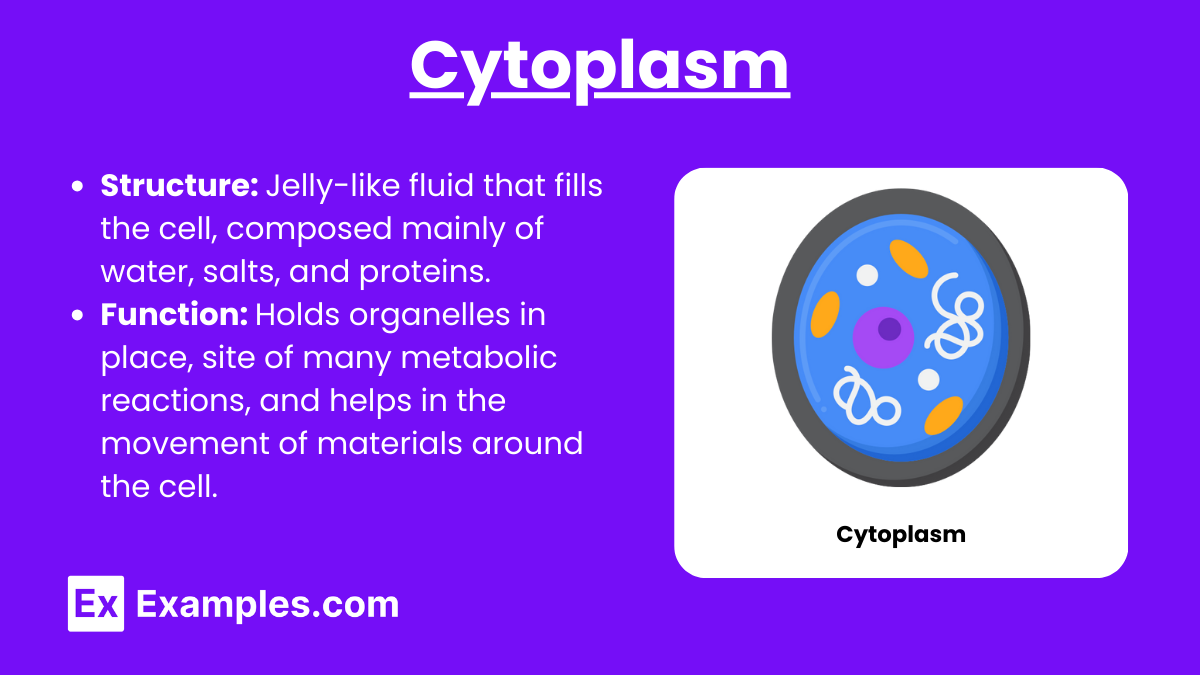
Structure: Jelly-like fluid that fills the cell, composed mainly of water, salts, and proteins.
Function: Holds organelles in place, site of many metabolic reactions, and helps in the movement of materials around the cell.
Nucleus
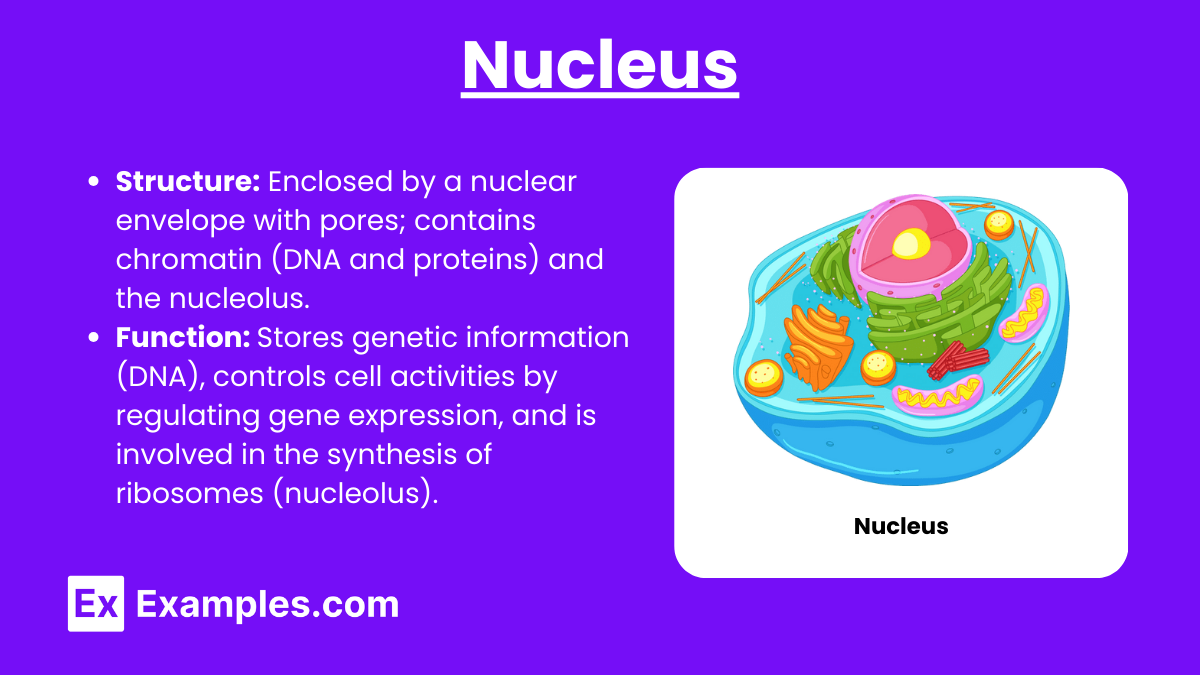
Structure: Enclosed by a nuclear envelope with pores; contains chromatin (DNA and proteins) and the nucleolus.
Function: Stores genetic information (DNA), controls cell activities by regulating gene expression, and is involved in the synthesis of ribosomes (nucleolus).
Ribosomes

Structure: Made of rRNA and proteins; found free in the cytoplasm or attached to the rough endoplasmic reticulum (ER).
Function: Synthesize proteins by translating mRNA.
Endoplasmic Reticulum (ER)
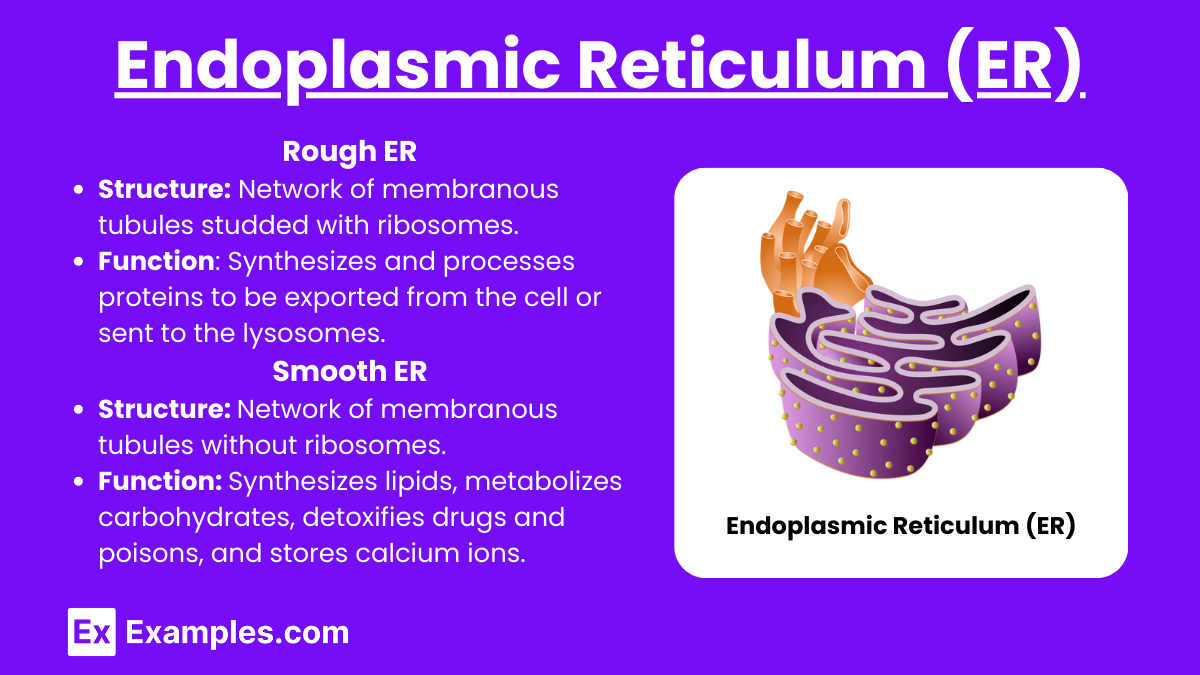
Rough ER
Structure: Network of membranous tubules studded with ribosomes.
Function: Synthesizes and processes proteins to be exported from the cell or sent to the lysosomes.
Smooth ER
Structure: Network of membranous tubules without ribosomes.
Function: Synthesizes lipids, metabolizes carbohydrates, detoxifies drugs and poisons, and stores calcium ions.
Golgi Apparatus
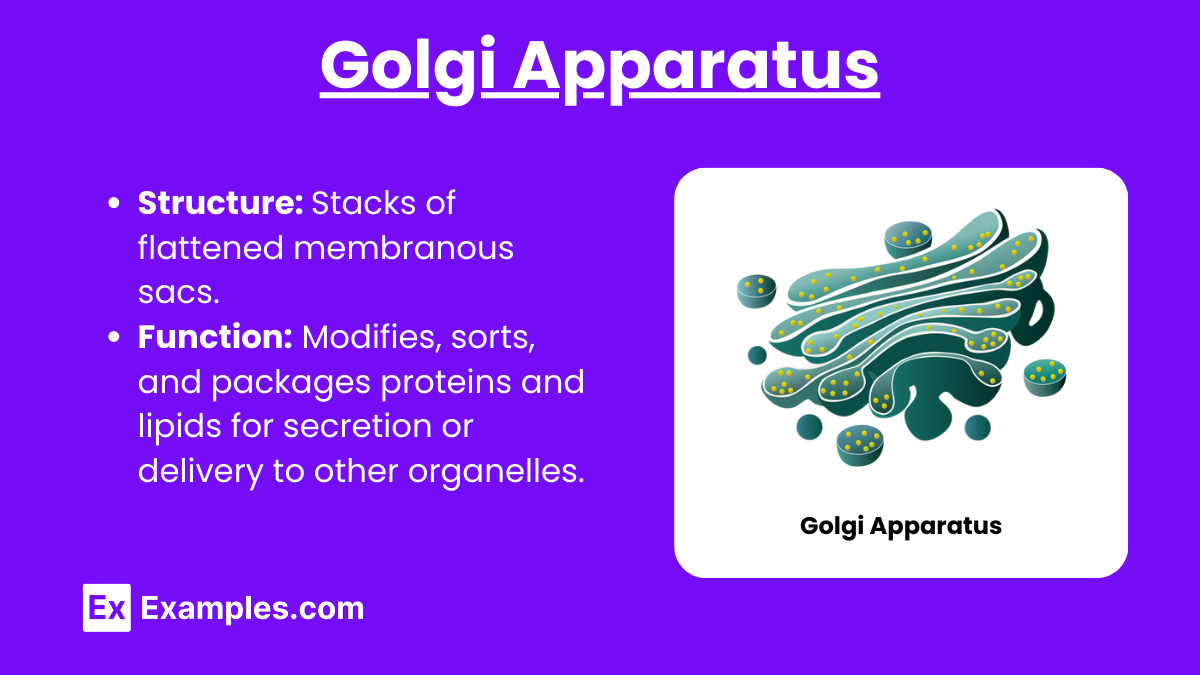
Structure: Stacks of flattened membranous sacs.
Function: Modifies, sorts, and packages proteins and lipids for secretion or delivery to other organelles.
Lysosomes
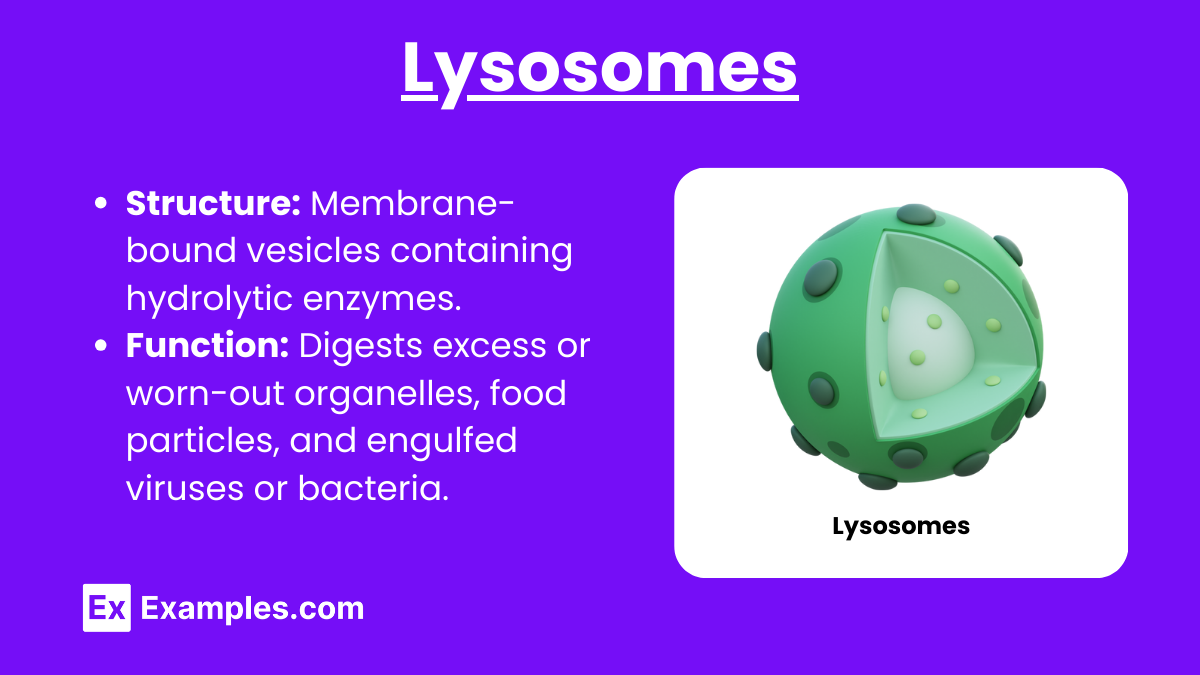
Structure: Membrane-bound vesicles containing hydrolytic enzymes.
Function: Digests excess or worn-out organelles, food particles, and engulfed viruses or bacteria.
Peroxisomes
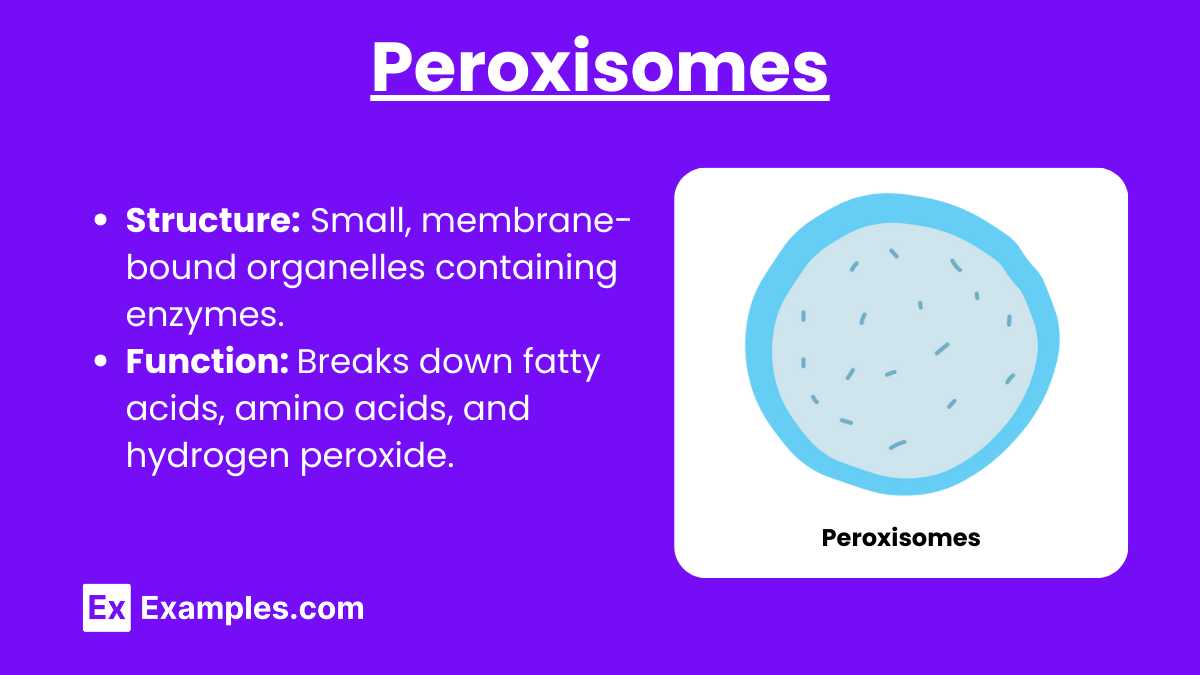
Structure: Small, membrane-bound organelles containing enzymes.
Function: Breaks down fatty acids, amino acids, and hydrogen peroxide.
Mitochondria
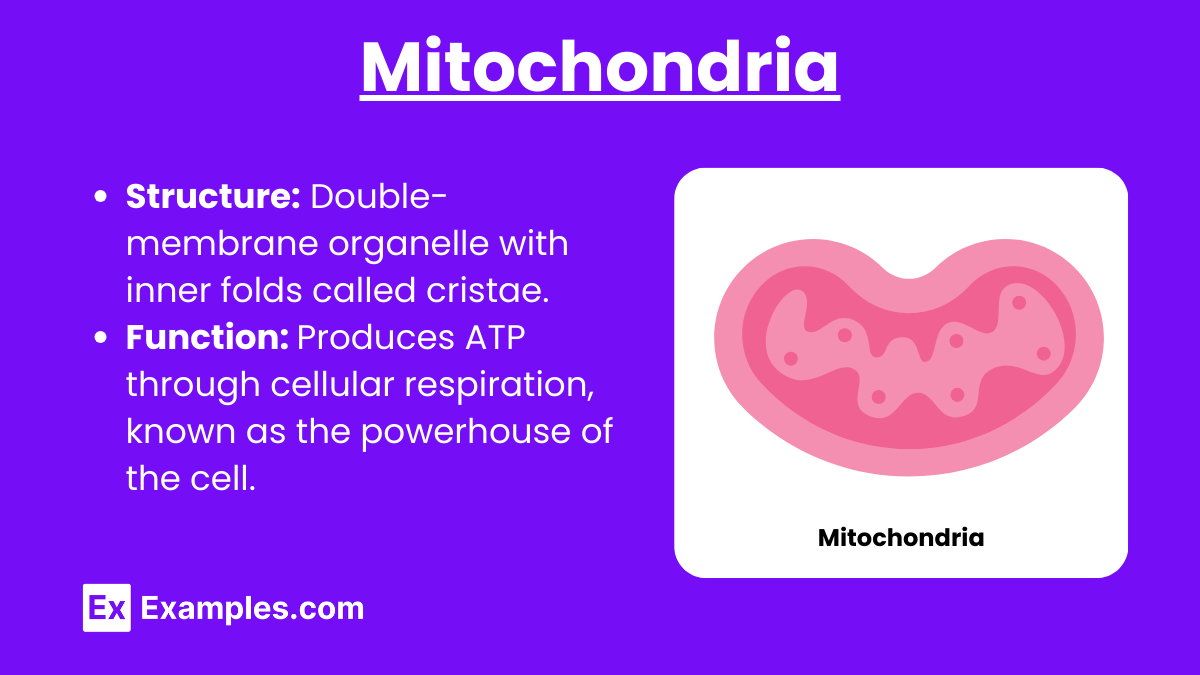
Structure: Double-membrane organelle with inner folds called cristae.
Function: Produces ATP through cellular respiration, known as the powerhouse of the cell.
Chloroplasts (Plant Cells Only)
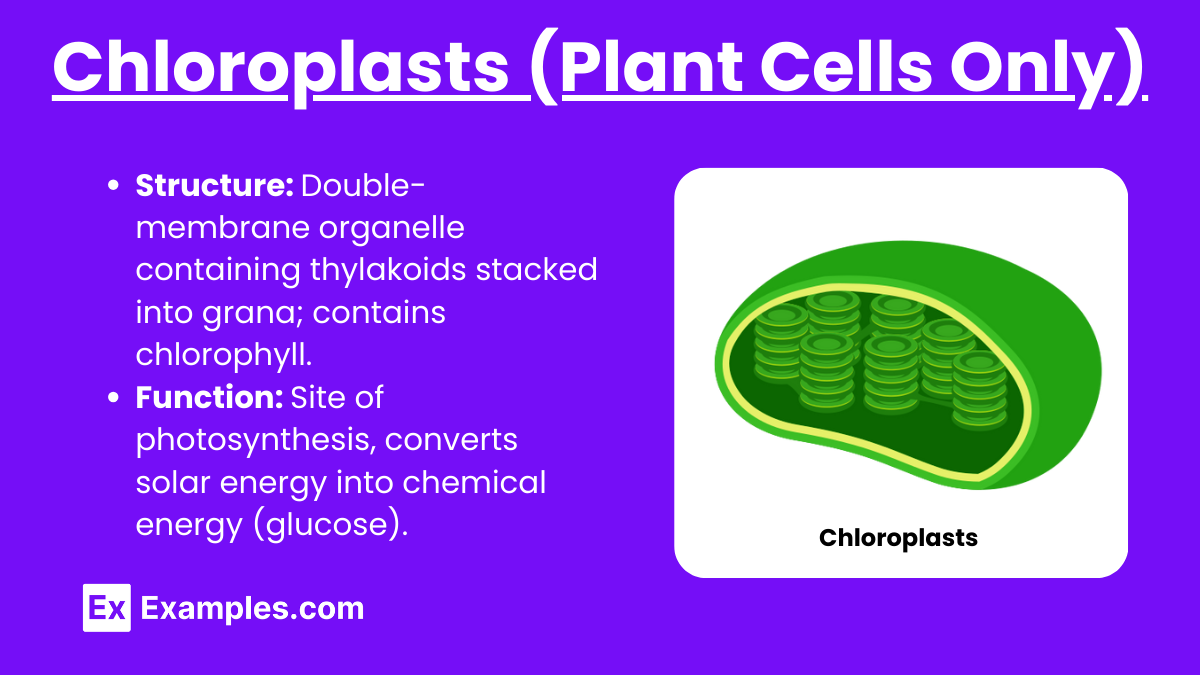
Structure: Double-membrane organelle containing thylakoids stacked into grana; contains chlorophyll.
Function: Site of photosynthesis, converts solar energy into chemical energy (glucose).
Cytoskeleton
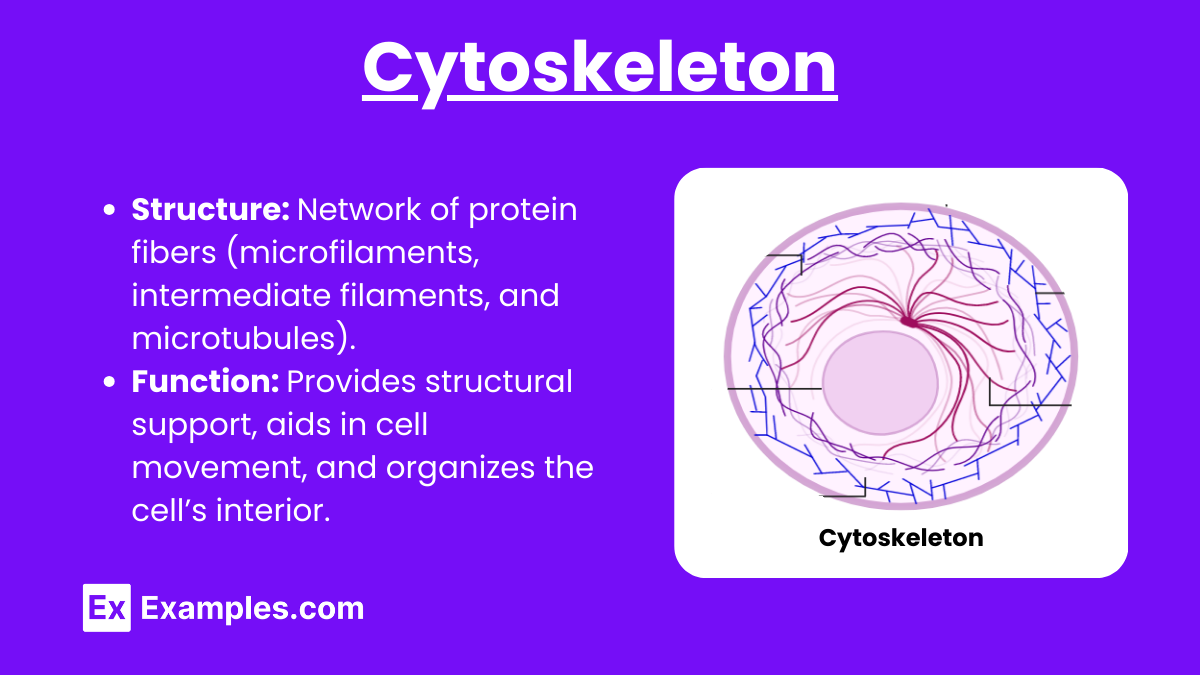
Structure: Network of protein fibers (microfilaments, intermediate filaments, and microtubules).
Function: Provides structural support, aids in cell movement, and organizes the cell’s interior.
Centrosomes and Centrioles (Animal Cells Only)
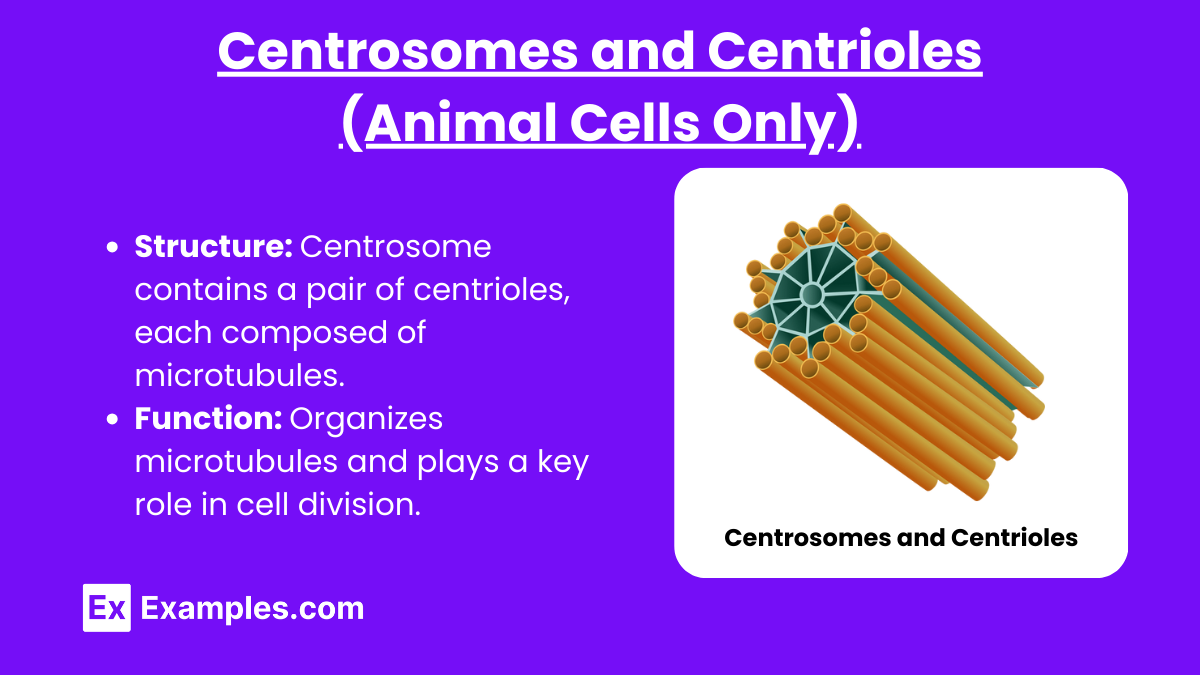
Structure: Centrosome contains a pair of centrioles, each composed of microtubules.
Function: Organizes microtubules and plays a key role in cell division.
Vacuoles

Central Vacuole (Plant Cells)
Structure: Large, membrane-bound sac.
Function: Stores nutrients, waste products, and helps maintain turgor pressure.
Small Vacuoles (Animal Cells)
Structure: Smaller, membrane-bound sacs.
Function: Storage and transport of substances.
Cell Wall (Plant Cells, Fungi, and Some Prokaryotes)

Structure: Rigid layer outside the cell membrane composed of cellulose (plants), chitin (fungi), or peptidoglycan (bacteria).
Function: Provides structural support, protection, and regulates cell growth.
Extracellular Matrix (Animal Cells)
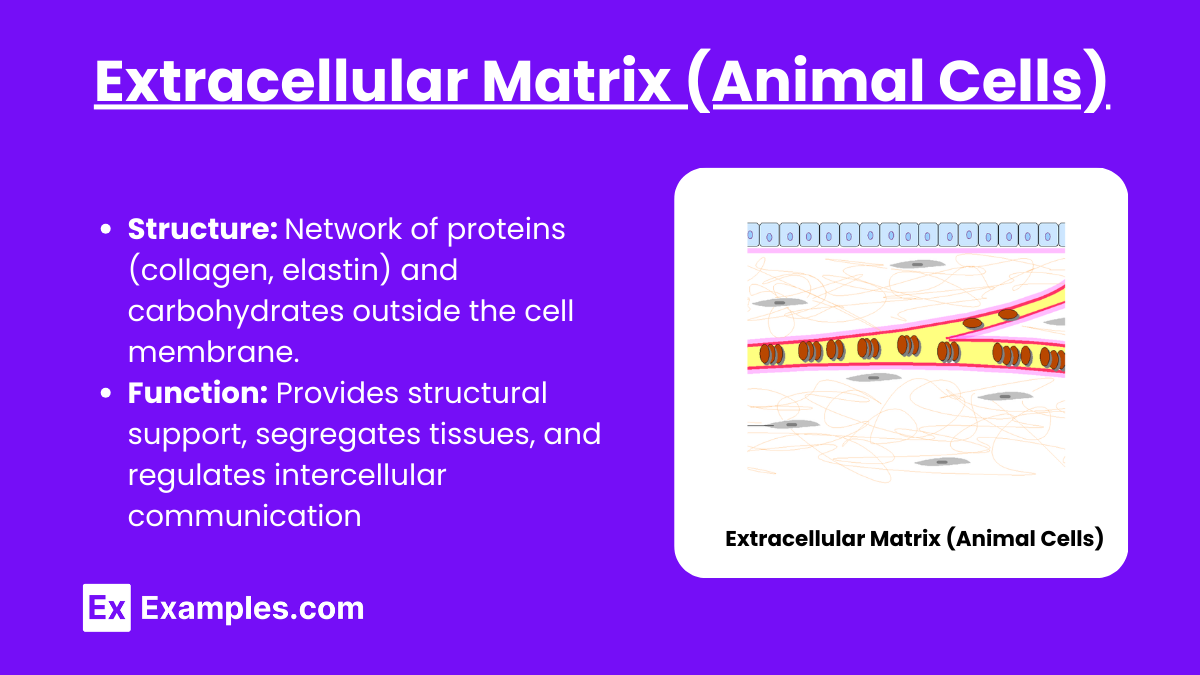
Structure: Network of proteins (collagen, elastin) and carbohydrates outside the cell membrane.
Function: Provides structural support, segregates tissues, and regulates intercellular communication.

